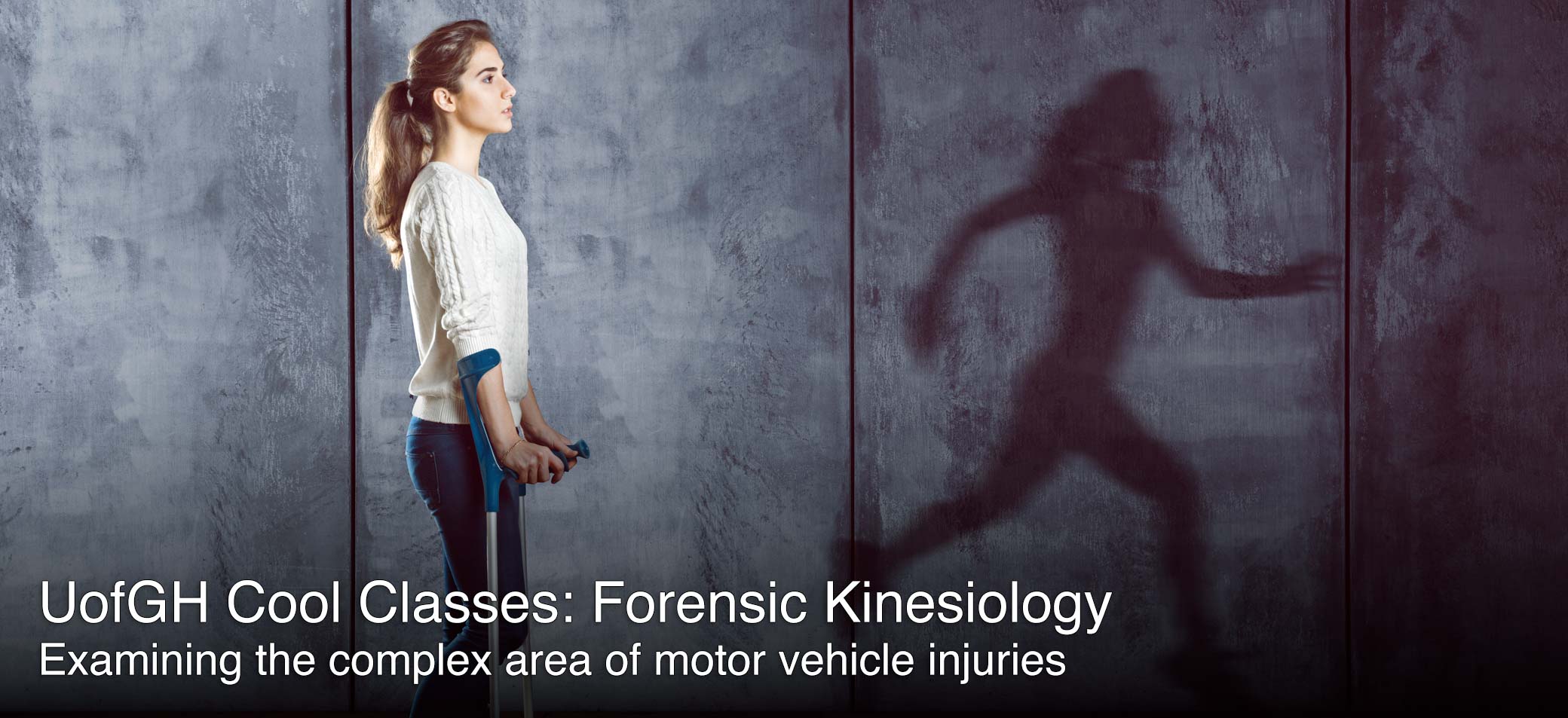- Future Students
- Current Students
- Faculty
- Staff
- Alumni
- Others
UofGH Cool Classes: Forensic Kinesiology
Why is this course interesting?
Assessing and treating motor vehicle accident injuries is a complex area that requires knowledge of kinesiology, as well as insurance and legal considerations. In instructor Tammie Kip’s elective class Forensic Kinesiology, Kinesiology students learn to analyze motor vehicle injuries from the perspectives of both a treating kinesiologist and an insurance company expert, who might be called to testify in court.
“Seventy percent of people with injuries seek treatment and rehabilitation due to motor vehicle accidents. This course goes beyond the fundamentals, and adds another level of complexity and perspective,” says Kip. “It’s important to understand the mechanics of how an accident occurs, and this course helps you get that understanding.”
From a forensic perspective, students learn about the examination role, and how the insurance industry uses experts to assess causation, prognosis, and recovery, says Kip. “Students will learn to give an opinion on whether there’s a disability, limited function in relation to the activities of daily living, and a person’s inability to return to work – and that’s all done through assessing the whole person and looking at their past medical records and giving an opinion on whether the injury is ‘minor’, ‘non-minor’, or ‘catastrophic’.”
“We look at how their skills can be used not just to help people, but also the variables on how it relates to different triggers – categorizing injuries, and understanding the impact as severity is increased, so it adds more complexity and is really interesting.”
What will you learn?
Through case studies and group exercises, students look at injury biomechanics relating to motor vehicle accidents. “We look at when a vehicle is struck in a certain way – how does the body move within that vehicle? What are the potential injuries that can result from such movement? And taking that further, into how do we categorize those into the different streams of coverage available for insurance?” says Kip.
Students also learn to assess whether an injury is a ‘minor’, ‘non-minor’, or ‘catastrophic’ injury and digs deep into causation. “We look at determining, from a forensic perspective, did the accident actually cause the injuries sustained and the resulting impairment and disabilities, where are the gaps, and what is the likelihood of recovery and returning to daily activities and work?” says Kip.
Students also gain exposure into what is involved with giving an expert opinion in court, and how kinesiologists work with other rehabilitation professionals. “It’s important to understand all of the factors that contribute to the examination and assessment, and resulting opinions and outcomes, because they are important if they are to be relied on in court later on; and the differences between what a treating kinesiologist would do vs. a forensic role.”
What will you take away?
The course offers students an insight into a different area of kinesiology, and into a career area they may not have known about or previously considered. “What this course does is it helps give some insight into how to work from an expert perspective, and the opportunities that exist from a kinesiology perspective that students could potentially go into following graduation or further on in their careers once they obtain some additional specific education – it opens up a whole new realm of possibility of what they can do,” says Kip.
She adds: “Because insurance is such a huge piece, it’s important to understand how accident victims may differ from other injured victims when they’re being treated, because they’ll be asked a lot more from the insurance companies and be involved in larger rehab teams as well.”








